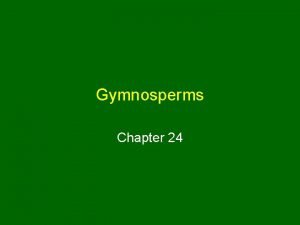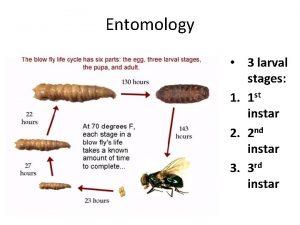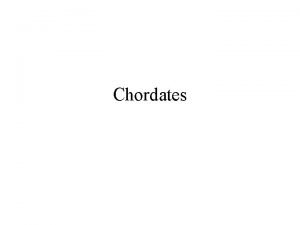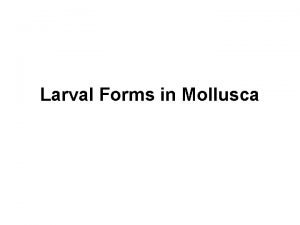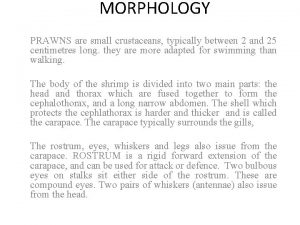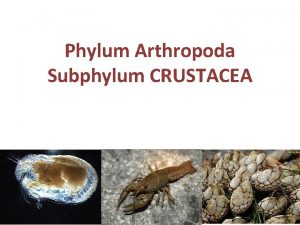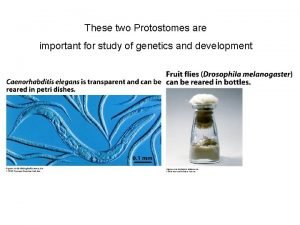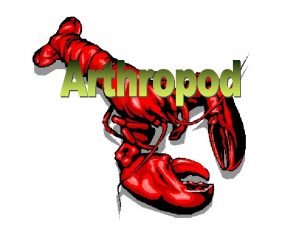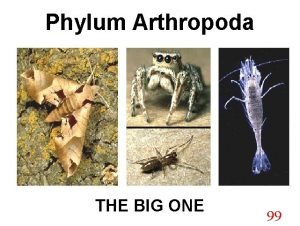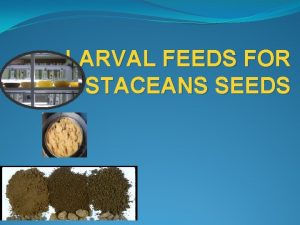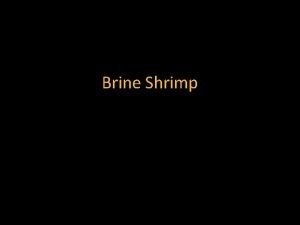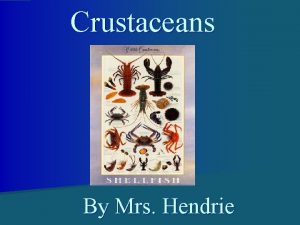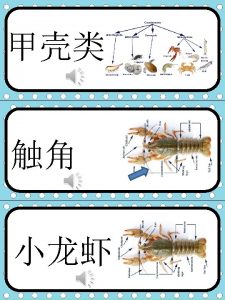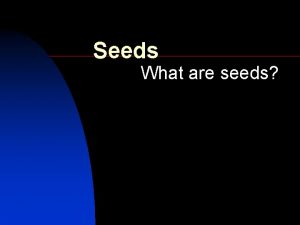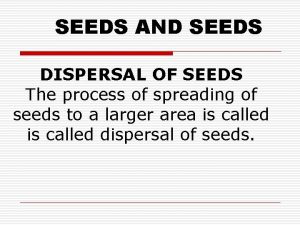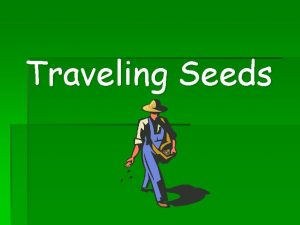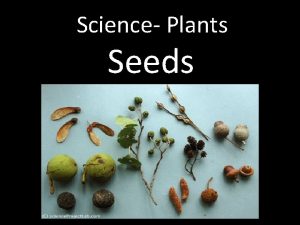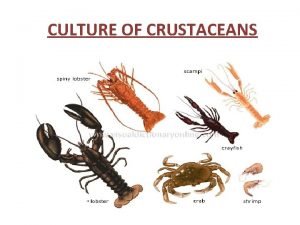LARVAL FEEDS FOR CRUSTACEANS SEEDS FEEDS FOR SHRIMP










- Slides: 10

LARVAL FEEDS FOR CRUSTACEANS SEEDS

FEEDS FOR SHRIMP LARVAE • NAUPLII STAGE(1 -6)-36 hrs – Depends on the stored nutrients from the eggs. - Begin feeding at N 6 �Isochrysis(stage 1) �Brown algae(3 -5 mm) • ZOEA STAGE: Ø Three zoeal substages Ø feeds on phytoplankton �Chaetoceros(stage 1 -3) �Diatom(4 -6 mm) �Tetraselmis � Green algae(10 -15 mm) �Platymonas

LARVAL STAGES FEEDS QNTY FEEDING TIME NAUPLIUS - - - ü 1 -Isochrysis+Chaetoceros 80, 000 Twice- once in 1, 000 cells/ml morning and at 4 pm PROTOZOEA Stage 1 -2 Stage 3 MYSIS stage 1 Stage 3 POST LARVAE ü 3 days old chaetoceros and 4 days old Platymonas+ isochrysis • freshly hatched artemia nauplii • unicellular algae 1 nauplius/4 ml 1 N/2 ml 1 lakh cells/ml Algal feeding Artemia nauplius 60, 000 cells/ml 1/ml 3 times/day Unicellular algae such as Chaetoceros and Platymonas Algal feeding-3 times/day-once in morning, 12 pm noon, 4 pm evening.

Larval Feeding Mysis �Feed on large algae cells at early stage. �Switch to Artemia (brine shrimp) for later stages

Larval Feeding Postlarvae �Artemia �Formulated diet � 35% protein � 3% fat �Feeding rate � 200% body wt/day 50%x 4 times per day. • Crushed and washed clam meat can also be given GALVESTON SYSTEM Ø 200 lits of mixed phytoplanktons predominantly Chaetoceros(2 lakh cells/ml)feeds for the protozoae. ØMysis, frozen brachionus @100 rotifer/larva/day.

The effect of Artemia replacement. The use of microbound feeds decreases survival or growth when fed at levels of 40 -50% or higher. In controlled laboratory conditions, however, the results are generally better than in commercial hatcheries. Species Diet Artemia Larval replacement stages (%) P. Monodon Crumbled 100 experimental microbound diet Z-PL Similar survival but lower growth l. vannamei Microencapsulat 70 -1 oo ed diet Z-PL 80% survival compared to 90% survival in live L setiferus Crumbled experimental microbound diets 40, 60, 100 Result compared to Artemia control Decreased survival, growth, development and stress resistance (but similar survival at 40 and 60% in the presence of algae)

PRAWN’S LARVAL FEEDS 11 LARVAL STAGES+POST LARVAE

PRAWN LARVAL FEEDS �Artemia nauplii, cut piece of mushroom and earthworm, fish flesh, hens egg(custard), soya products, freshwater snails, marine bivalves, squilla, tubifex worm, lamellidens and prepared feeds. �Feeding starts on the second day of hatching

INGREDIENTS FEED TYPES PRAWN LARVAL FEEDS TYPE-I a) Freshwater mussels meat(foot & gonad) Developed at CIFA b) Hens eggs TYPE-II Qty % by wt c) Skimmed milk powder d) Vitamin mineral mix 68 20 10 2 a) b) c) d) e) 68 20 5 5 2 Fish flesh Hens eggs Wheat flour Skimmed milk powder Vitamin mineral mix All ingredients of the prepared feeds should be thoroughly ground and mixed in a grinder with little water

CARE �Prepared feeds usually given day time �Different stages required 50 -150 ug prepared feed/larva/day �Artemia nauplii-5 -50/larval/day-usually given at night to ensure food availability throughout the night. �Inadequate feeding will leads to stunted growth, cannibalism etc. �Regular tank cleaning require.
